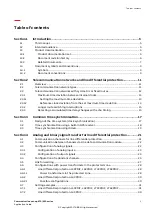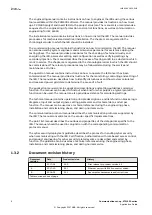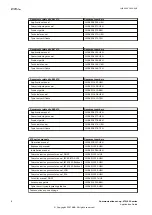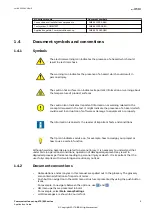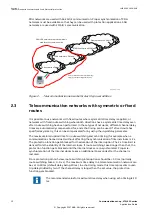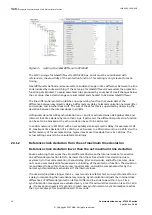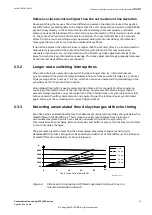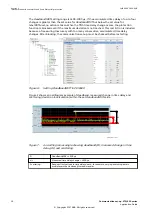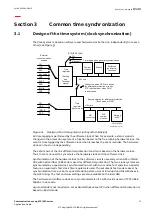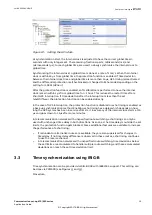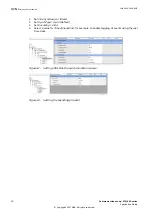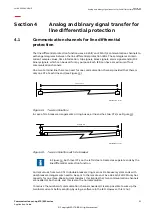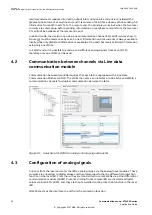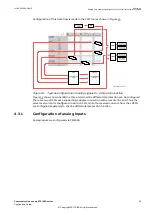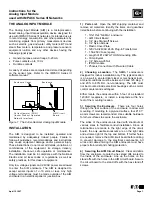
Section 2
Telecommunication networks and
line differential protection
2.1
Overview
GUID-8EC49FAE-5EFE-4C17-AD2A-F1824B2518B4 v1
Telecommunication networks have two main application areas for multi-terminal line
differential protection IEDs with up to five line ends:
•
Networks with symmetric or fixed routes using echo timing (back-to-back systems
included)
•
Networks with unspecified route switching using accurate global time derived from the
Global Positioning System (GPS)
Echo timing can be used as a fall-back system in the latter application area if
the GPS reference is lost in one or more IEDs,
.
GUID-0C62EF3A-999C-4EEF-BE48-CC4DF1DCD8D9 v1
With networks using symmetric or fixed routes and echo timing, the internal clock in each local
line differential protection IED operates as a master and the internal clock in each remote line
differential protection IED operates as a slave. Time deviations between the internal clocks are
monitored continuously, and compensated for with echo messages between all ends at 40 ms
intervals over the telecommunication network. After start-up, it takes approximately 15
seconds to reach full synchronization of the internal clocks. Time deviation between the
internal clocks is compensated for to be within 1 μs of relative time.
The internal clock also functions as a real time clock for other protection and
monitoring functions such as event timing, but this is totally separate from the
line differential protection function.
With networks using unspecified route switching, reference for the internal clock comes from
global time provided by, for example, a built-in GPS receiver. The internal clock in each line
differential protection IED is thus set according to the GPS systems' global time. Inaccuracy
depends on the connection time to the GPS system. After start-up (cold start), a software
calibration procedure is carried out. After less than one hour, all internal clocks' real time
deviation from the global time has decreased to 1 μs.
There can be only one master clock in the telecommunication network for the synchronization
of multiplexers, transceivers and differential protection relays' communication modems. This
clock can also be a GPS clock but the telecommunication network synchronization is totally
separate from the line differential protection IED's internal clock synchronization.
2.2
Telecommunication network types
GUID-3AA2C8C6-62B7-42E4-AD80-0479BAFF21C6 v1
There are two main types of telecommunication networks used by electric power utilities:
Plesiochronous Digital Hierarchy (PDH) networks and Synchronous Digital Hierarchy (SDH)
). These networks are mostly owned by the utilities, but it is also
possible to lease communication links from external companies.
1MRK 505 382-UEN E
Section 2
Telecommunication networks and line differential protection
Communication set-up, 670/650 series
11
Application Guide
© Copyright 2017 ABB. All rights reserved
Summary of Contents for Relion 670 series
Page 1: ...Relion 670 650 SERIES Communication set up 670 650 series Version 2 2 Application Guide...
Page 2: ......
Page 10: ...4...
Page 99: ...93...





